We investigate whether KTM’s new 390 Adventure can justify its sizeable price difference over the RE Himalayan 450.
Two of the most compelling options in the mid-capacity category in India are the 2025 KTM 390 Adventure and the Royal Enfield Himalayan 450. While both bikes promise adventure-ready capabilities, they take different approaches to design, features, performance and ride quality. However, the most significant difference between the two is their price, and we’re here to tell you if the new kid on the block justifies its higher price tag.
Form and function
The latest KTM 390 Adventure embraces a more rugged ADV-focused design. While it appears more premium than its predecessor, its underbelly exhaust design deviates from traditional adventure bikes.
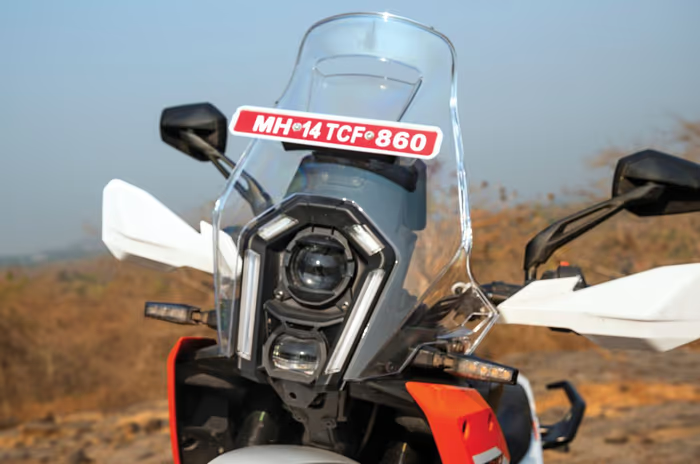
The KTM’s headlamp easily outshines the RE’s.
Available in only two colours, the KTM’s aesthetic may not appeal to everyone, but it does feel modern and carries less visual bulk than the Himalayan. However, the extensive use of plastic panels means you will need to learn to live with buzzes and rattles, something our test bike already had.
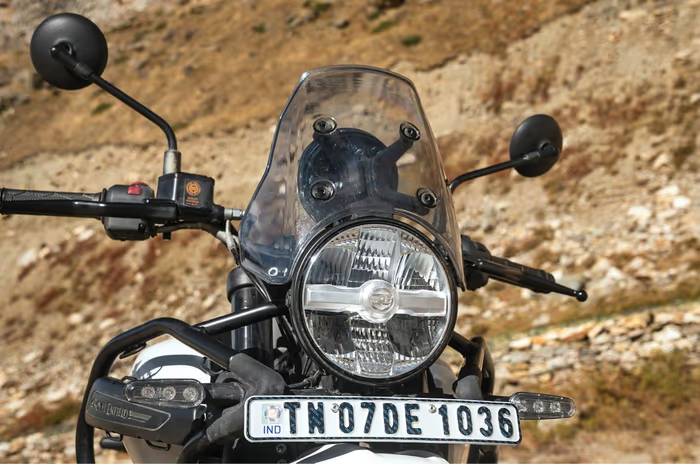
The RE’s headlamp has adequate illumination.
The Royal Enfield Himalayan 450 has less of a traditional ADV aesthetic and instead focuses on a more muscular naked look with a big fuel tank, minimal bodywork and a small windscreen. The larger dimensions, heavier weight and distinct side-stand lean angle make it feel like a bigger motorcycle, but the downside is that this makes it heavy and intimidating for some riders. The Himalayan’s more metal-heavy construction gives it a greater sense of durability and toughness.

The 390 Adventure’s TFT has a better user interface.
Both motorcycles have essential electronics such as a TFT display, switchable ABS and riding modes, but the KTM 390 Adventure goes one step ahead with segment-first features like cruise control, traction control, cornering ABS and dedicated ABS modes.

KTM’s switchgear feels higher quality and more tactile.
The KTM’s user interface is smoother, retains rider preferences even after being switched off, and has a more premium feel with tactile switchgear.
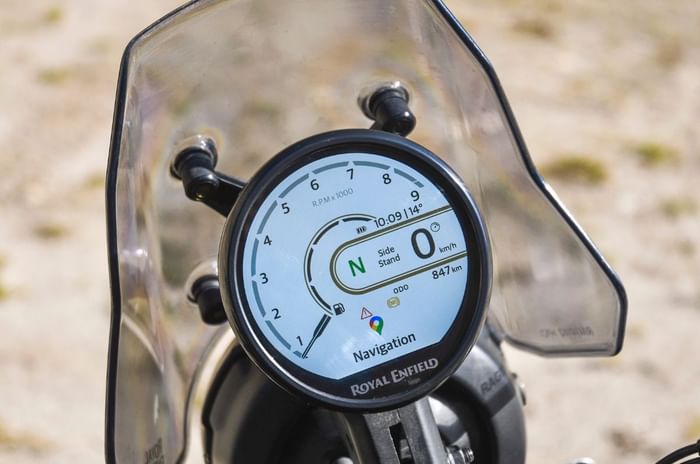
Himalayan’s circular TFT is legible even on a sunny day.
In contrast, the Himalayan 450’s electronics feel less refined. The mode-switching response is inconsistent, and the built-in Google Maps navigation, while excellent in theory, requires an unlocked smartphone screen to function, making it less practical.

The Enfield’s switchgear doesn’t feel nearly as tactile as the KTMs.
The toggle switch to browse the menu also feels flimsy and tricky to control, diminishing the user experience. Given these quirks, the KTM’s interface feels more polished and rider-friendly.
Comfort and convenience
The KTM 390 Adventure has an upright seating position with wide handlebars, making it comfortable for taller riders. Its slightly forward-leaning stance aids control, while the taller windscreen provides better wind protection. However, the non-adjustable windscreen can be intrusive for some and blocks airflow, making city riding in hot weather uncomfortable. Its LED headlamp is among the best on any Indian motorcycle, significantly outperforming the Himalayan’s.
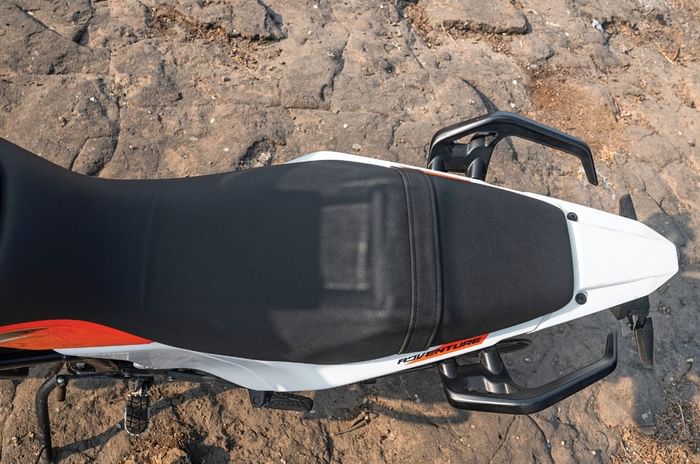
KTM doesn’t offer an alternative to their hard seat.
KTM has equipped the 390 Adventure with crash bars, a bash plate and handguards, but the bike lacks a centre stand and has limited luggage-mounting points. While KTM offers optional accessories, the Himalayan takes the lead in customisation.
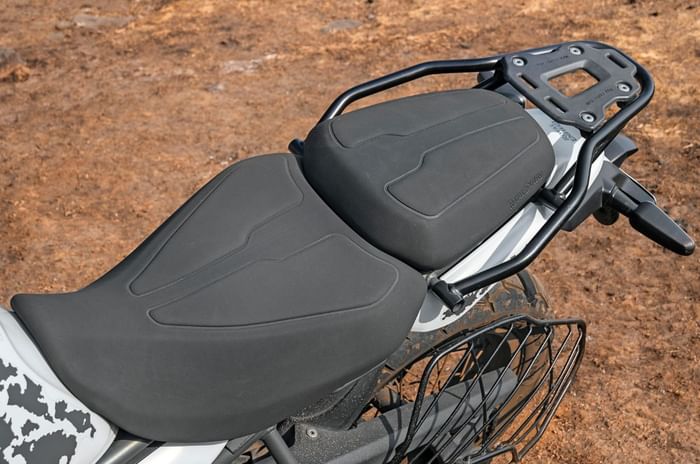
Useful rear rack and optional touring seats make the Himalayan better equipped for a long tour.
Royal Enfield offers a wide range of OEM accessories, including luggage options, seat choices and crash protection. It has better standard luggage mounting points, and its tank guard doubles up as an extra mounting location. The optional touring seat is among the most comfortable in its class, making it better suited for long rides.
Off the beaten path
The KTM 390 Adventure is a significant 13kg lighter than the Himalayan, making it easier to manoeuvre. The lighter weight also helps shorter riders feel more confident in handling the bike, particularly off-road. The KTM’s throttle response is precise, its electronics enhance trail riding, and its brakes offer better control.
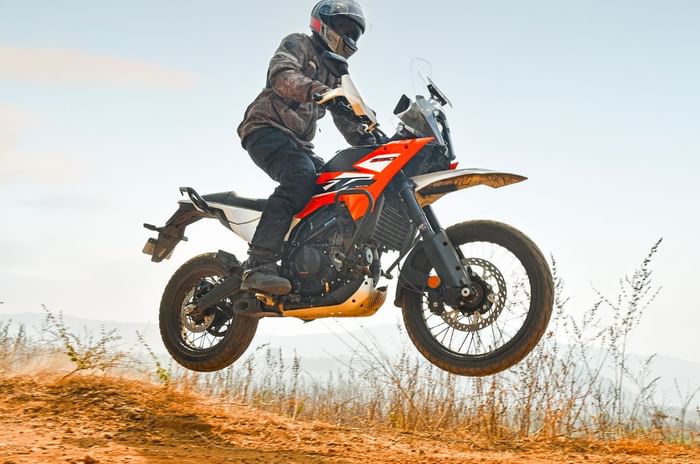
Thanks to its lighter weight, the KTM is easier to handle off-road.
The bi-directional quickshifter is a great addition, making gear shifts seamless – especially when wearing off-road boots. However, the KTM’s suspension struggles with aggressive off-road riding, frequently bottoming out. While KTM offers adjustable suspension, it doesn’t cope as well as the Himalayan, even when firmed up, and most riders would prefer a well-balanced setup out of the box.

The Himalayan 450, on the other hand, offers a superior suspension setup that absorbs off-road bumps effortlessly. Despite its heavier weight, it manages low-speed manoeuvres and jumps surprisingly well. The torquey engine is easy to control, and the clutch, though precise, is not as light as the KTM’s. The brakes require careful modulation, as the rear locks up easily. While lacking advanced electronic rider aids, the Himalayan still performs admirably in off-road conditions, handling about 95 percent of what the KTM does and keeping its rider more comfortable while at it.
On the open road
On highways, the KTM 390 Adventure is more engaging and stable and equipped with cruise control, which is a game-changer for long-distance touring. The KTM shares its main frame and engine with the 2024 KTM 390 Duke, but it features a bespoke rear subframe, swingarm and steering head for enhanced stability. It holds triple-digit speeds effortlessly and accelerates faster than the Himalayan. In our tests, the 390 Adventure was nearly a second quicker to 100kph, while roll-on acceleration is almost on par.

The Himalayan 450 offers a more tractable mid-range and better overall comfort. Its plush suspension smooths out rough patches, making it the better option for long-distance touring. It also has a larger fuel tank, improving range. However, the Himalayan’s handlebar vibrates at higher RPMs, leading to numb hands after extended riding.
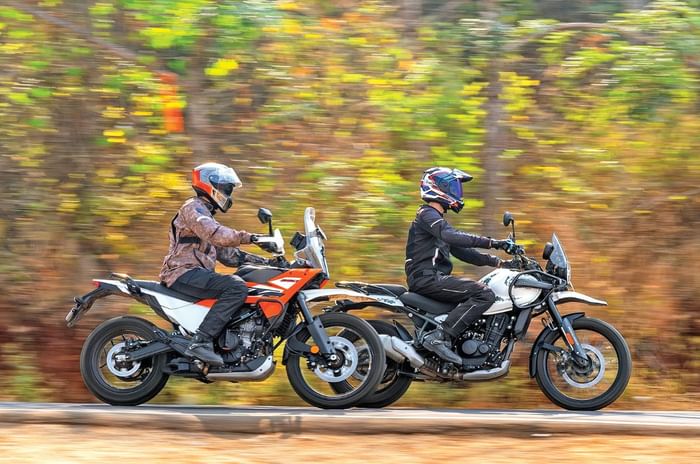
Despite this, the Himalayan performs well as a commuter, with a tighter turning radius and smooth lane-splitting capabilities. Meanwhile, the KTM feels smooth at highway speeds but has harsh vibrations in the footpegs at lower revs within the city. What took me by surprise were the Himalayan’s braking figures, which were pretty much on par with the KTM’s despite a significantly higher weight.
Different strokes for different folks
Both motorcycles present compelling options depending on rider priorities. The KTM 390 Adventure offers lighter weight, superior electronics and stronger performance. The main attraction is that it is lighter and easier to ride than the Himalayan, and it has a chassis that is engaging both on and off the road. On the other hand, the Royal Enfield Himalayan 450 is a more rugged, comfortable and budget-friendly alternative.
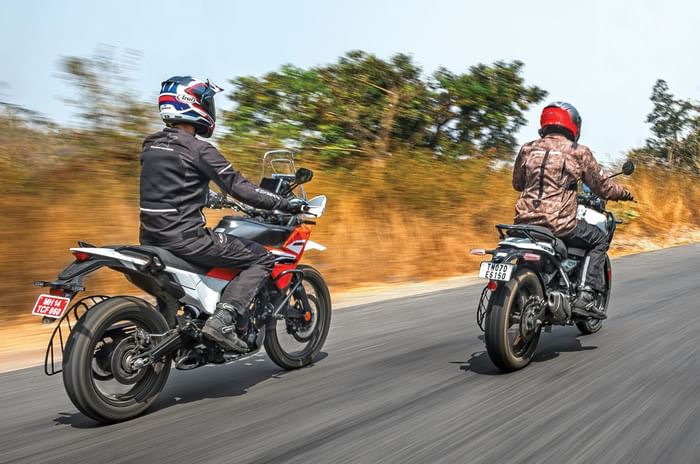
The KTM is clearly the better adventure bike, but the issue arises when you look at the on-road price difference, which stretches to as much as Rs 80,000-90,000 in Mumbai. If you simply want the KTM’s lighter and friendlier nature, then the lower-spec 390 Adventure X with its 19-inch front wheel is the answer, especially since it costs the same as the Himalayan.
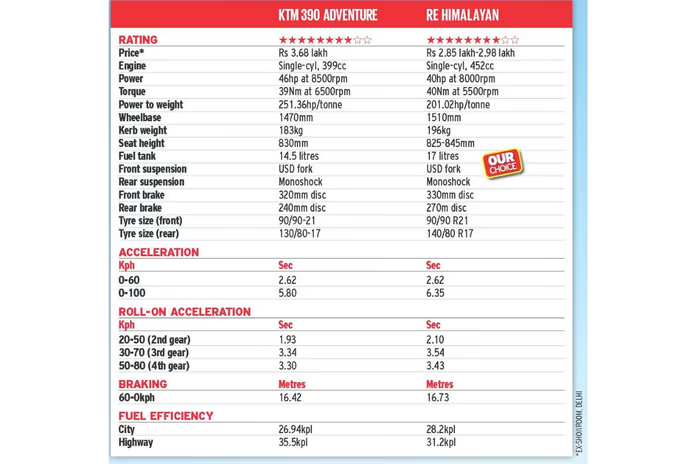
However, those willing to pay additional money for the standard 390 Adventure will probably be doing so for the extra edge in off-road performance, and that’s where the KTM’s suspension doesn’t quite match the expectation. That’s why, in this particular comparison, the Himalayan 450 just about wins by a whisker from a value-for-money perspective.
Also see:
KTM 390 Adventure vs Royal Enfield Himalayan comparison video

